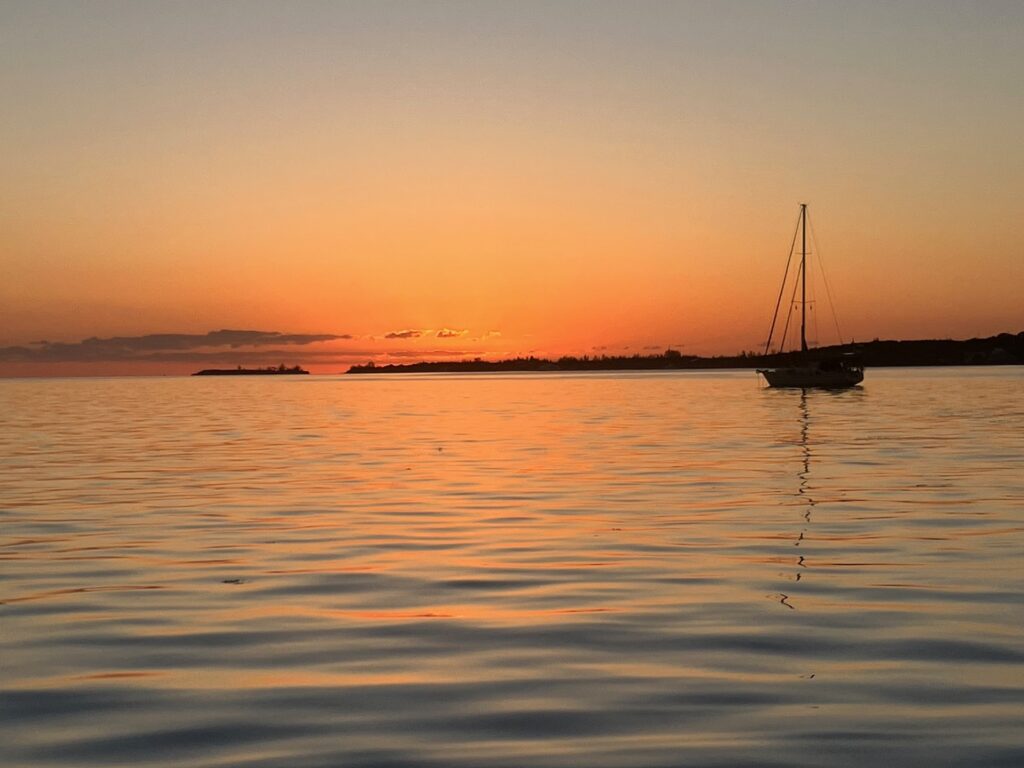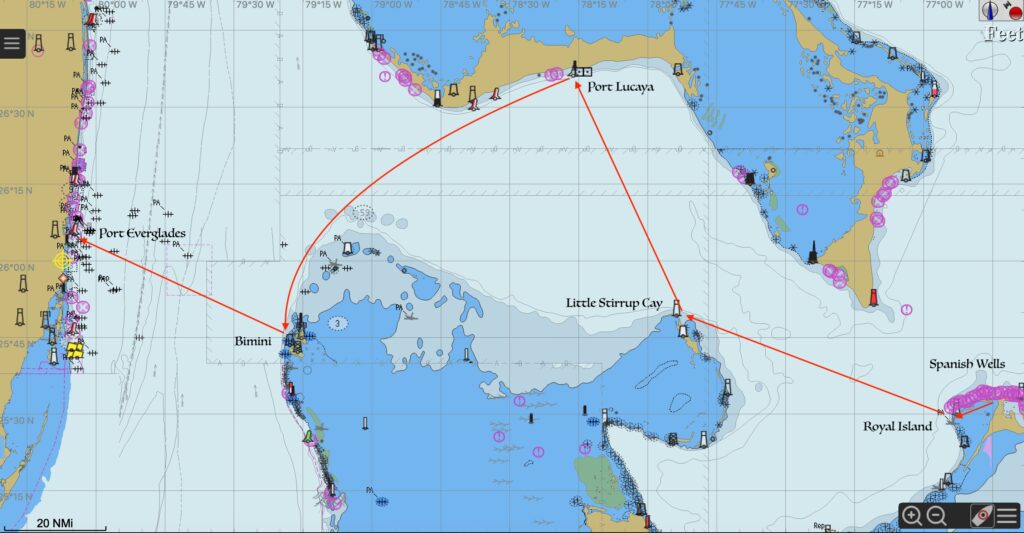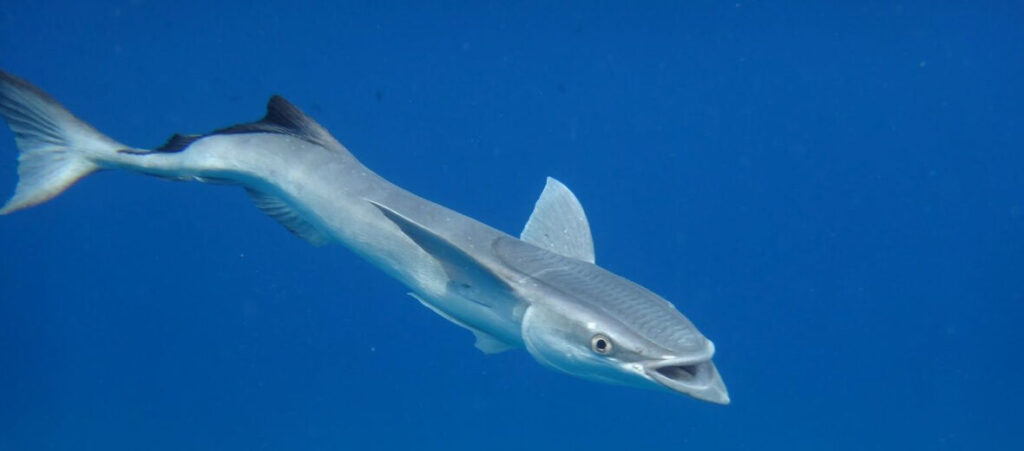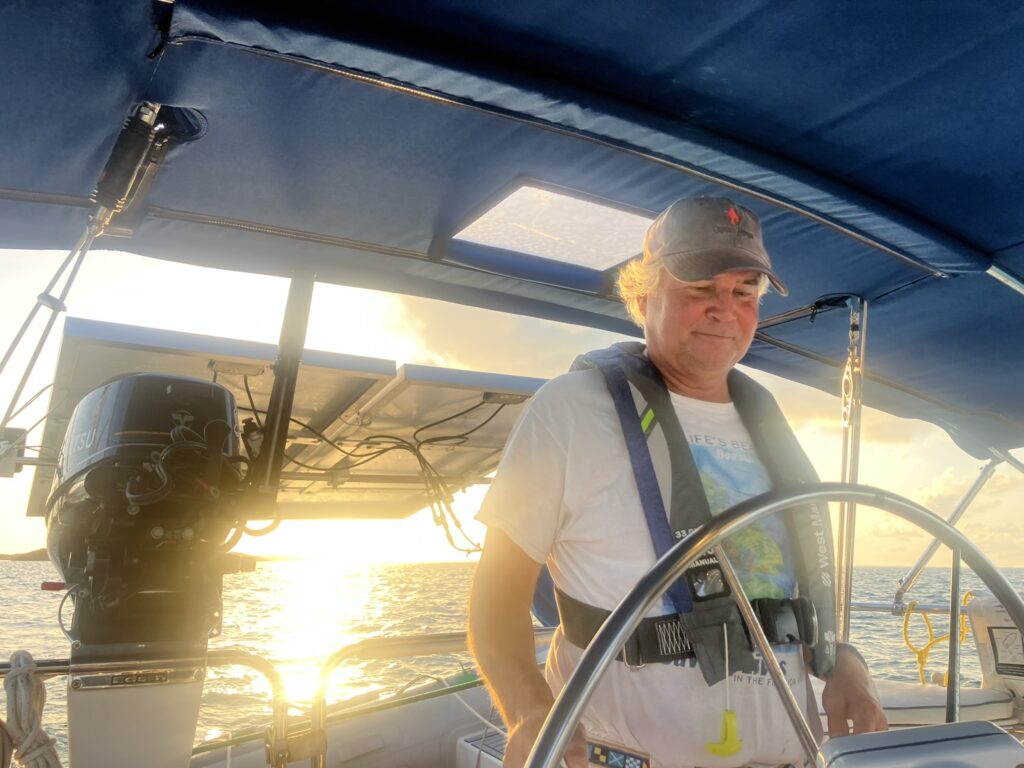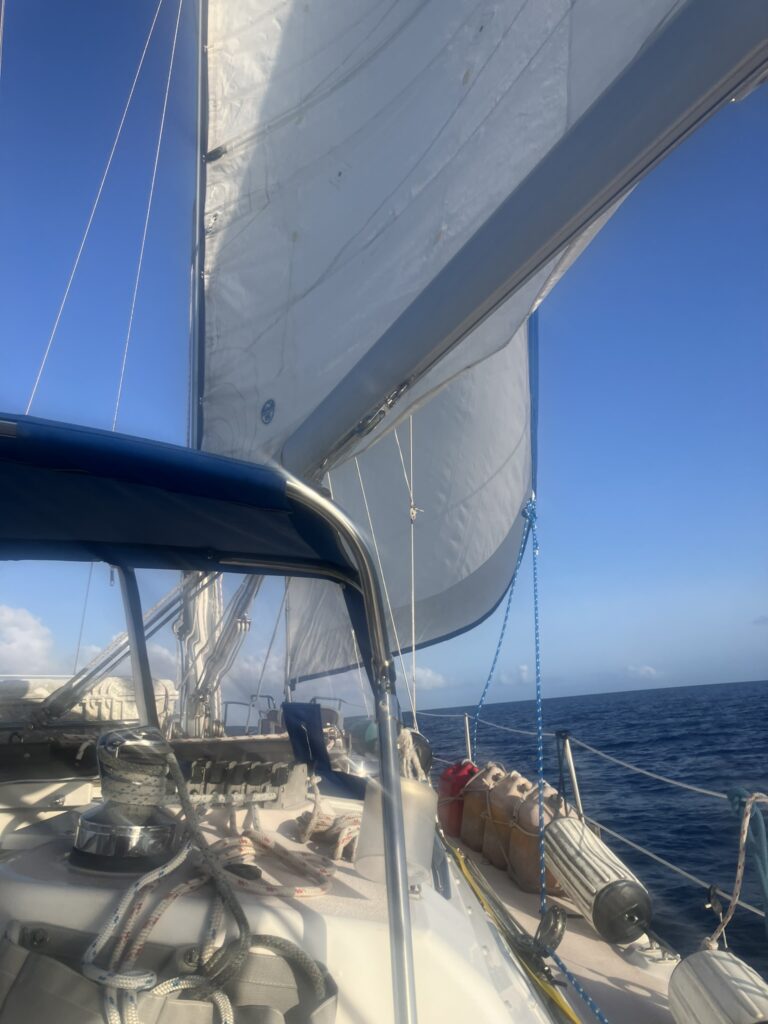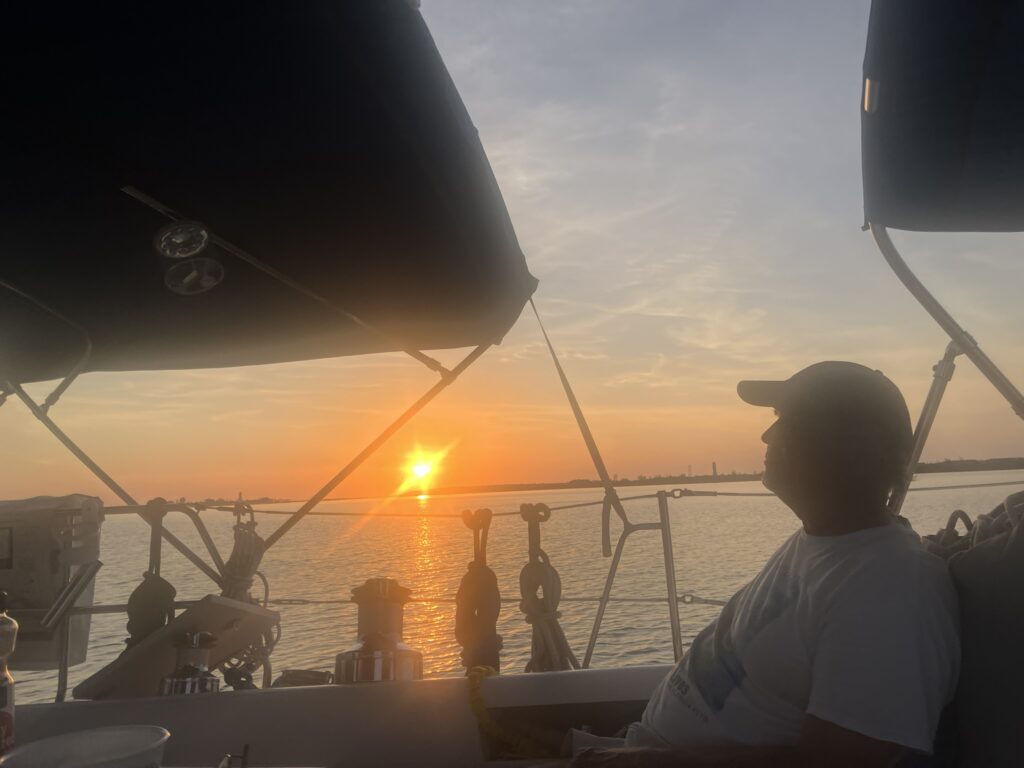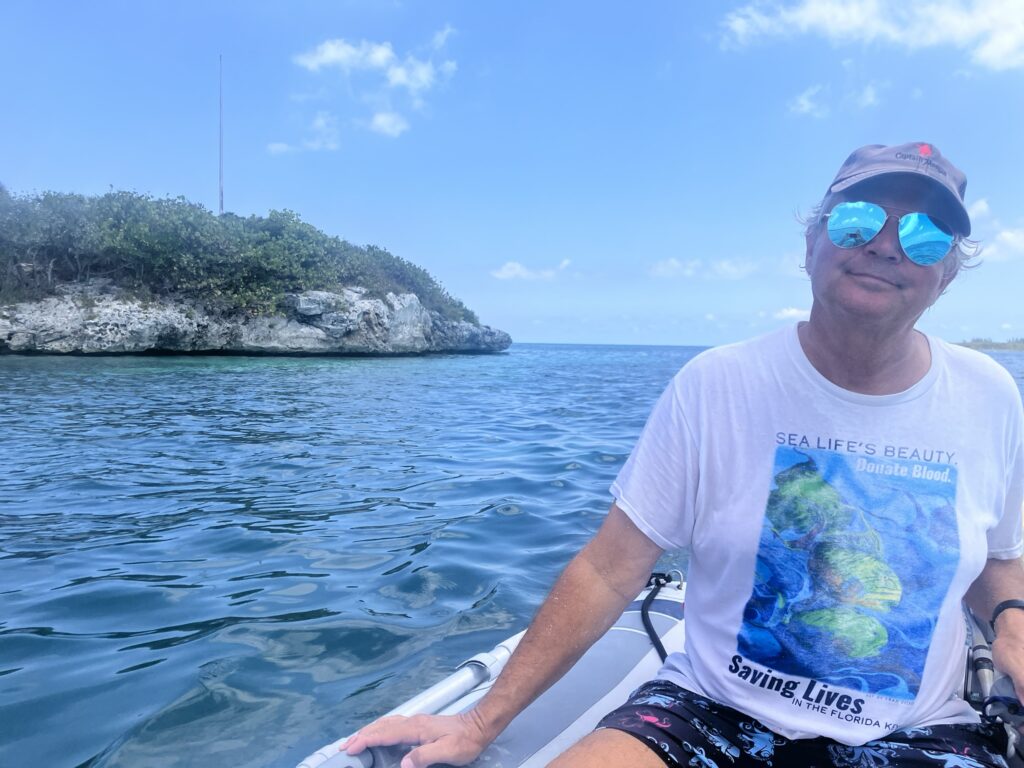Home is where the anchor drops.
— Old mariners’ saying
Going home, going home, I am going home
Quiet-like, some still day I’m just going home.
Morning star lights the way, restless dream all done.
Shadows gone, break of day, real life just begun.
— William Arms Fisher, “Going Home“
“Going Home” was the first song I learned to play on the flute. My father came home early from work every Wednesday to give me flute lessons, starting when I was 10 years old. He had bought a small notebook with blank pages for musical notation and sketched the notes in for songs like “Polly Wolly Doodle,” “Jingle Bells,” — and “Going Home.” (The music was composed by Antonin Dvorak for his New World Symphony, a favorite of my father’s.)
As a child growing up in a nomadic military family, the concept of home was somewhat confusing. From our perspective, home was something temporary. It is the same for Phil and me, now that we live on a moving vessel; it changes from season to season, port to port. Catmandu is our home; we have no other.
The last time we wrote in this blog, we were in Spanish Wells, Bahamas. The anchorage had emptied out, and it felt like the season was over. Our 90-day permit was up and we were going home.
Going Home, Part One
We allowed ten days to make our way back to the U.S., even though we could do it in four or five. We’ve learned to expect weather delays and mechanical mishaps.
The first leg was a short hop to Royal Island Harbor, four nautical miles to the west. This would set us up for the long crossing to the Berry Islands. We anchored and went swimming, but shortly after climbing the swim ladder, we saw a large creature under the dinghy.
“What was that?” I asked, thinking it was Jaws ready to snack on my bare foot.
“A remora, I think,” Phil said.
“The things that attach to sharks? We were swimming with that?”
“It might have been attached to our dinghy,” he said. I shivered. Ugh. (The ever-clingy remora.)
The anchorage was deserted. We were the only ones there overnight, and left at sunrise the next day. We motored through Egg Island Cut and out into the blue yonder, heading west in a 10-kt south wind.
The long passage to Great Harbour runs through the NE Providence Channel and was pretty rough. We were able to put up full sails on a beam reach and saw speeds over 6.5 knots throughout the morning.
It was a long, 11 1/2-hour day, but the wind and waves calmed to nothing in the afternoon. By the time we reached the anchorage, it was still and the water was glassy. There were cruise ships at Little Stirrup Key (“Coco Cay“), as usual, but only one other sailboat in the anchorage. We enjoyed a bright sunset and a calm night. The next day was a planned rest day.
In the morning, we took the dinghy for an exploratory cruise. We tried to land on a couple of beaches but the surf was much too strong. When the electric motor gave out, Phil had to row us back to the boat.
We went swimming in the clear water after the long dinghy excursion, and again, something scary lurked under the boat. Phil snorkeled to check the hull and the prop, trying to find out why our speed is so slow. I hung onto the swim ladder and the dinghy while he disappeared under Catmandu.
“There is a giant fish under there,” Phil said, as he re-emerged from the water.
“And you didn’t tell me! I went swimming with that?” (I have a healthy fear of sea creatures.)
“Well, after the remora, I thought I’d just ignore this one.” It was a terrible tarpon, probably about four feet long. (Phil says 3 feet.) I’ve heard they like to snack on toes, but I have no proof of that.
We headed out at sunrise the next day under full sail in a light west wind and made it to Grand Bahama Island, where we once again found a slip at Grand Bahama Yacht Club near Port Lucaya. We had a small problem: the calendar. We needed to depart from Bimini by May 28, and it was Labor Day Weekend. When Phil called ahead for a slip in Bimini, there were none available. Motor yachts from Miami were there for the long weekend, and we were “stuck” at Port Lucaya.
The “Grandma Mama Yacht Club” is our favorite place to stop in the Freeport area, with its sparkling clean pool, Pisces restaurant, and daily shuttle service to a large grocery store (not to mention the nearby liquor store). We had to wait here for the marinas to clear out in Bimini, but we did not mind one bit. We dinghied around the canals, visited the Lucaya Marketplace for tiki bars and restaurants, and watched the weather window for passage to the U.S. As we had only a couple of days left on our permit, we finally secured one night at Blue Water Marina and planned to set out for Bimini.
At 0600, we were ready to go, but Mother Nature had her own plan. We waited out a lightning and thunder squall before pulling in to Bell Channel in stronger winds and higher seas than predicted. We reefed the jib and motor-sailed in 15 to 20-knot winds and choppy 3-foot seas. It was a wild ride! We saw 8.5 knots on the downside of a wave, very fast for our boat.
At around 1 p.m., we passed Great Isaac Lighthouse and the wind calmed a little. Our balky wind instrument finally gave up the ghost, and we sailed on without it. For the last hour, we motored along Radio Beach and then entered Bimini Harbor with very little boat traffic. We tied up at the marina and noted how empty it was. Two rays and a nurse shark passed under the boat in the gin-clear water.
We had one day left on our cruising permit. Winds were high, and without a wind instrument, we wanted to wait for better crossing weather. Would we get in trouble for staying one more night? Luckily, the following morning was bright and clear and we set out for home at 6:45 a.m. The autopilot tried to send us in circles, so we had to hand-steer into the Gulf Stream and compensate for the northward push.
Just to make our homecoming more interesting, the wind and waves entering Port Everglades were wild. We tried to reel in the jib, but in pulling the furling line, I managed to get the sail tangled up and stuck partially furled. It made a deafening flapping noise all the way into the port and Phil had to go forward to work on untangling the mess. We made three bridges and pulled into a slip on an old familiar dock at Loggerhead Marina in Hollywood, Florida, U.S.A. One could say we were “home.”
